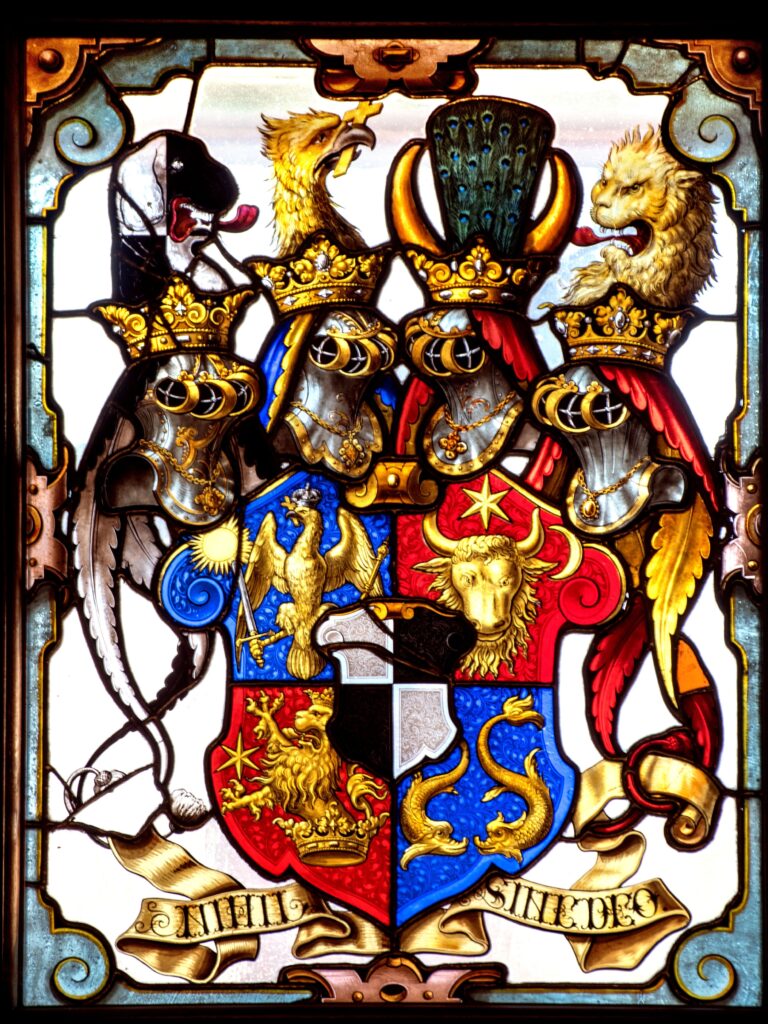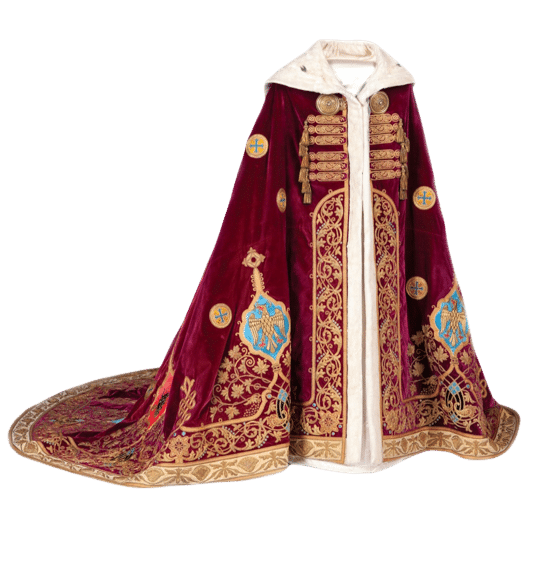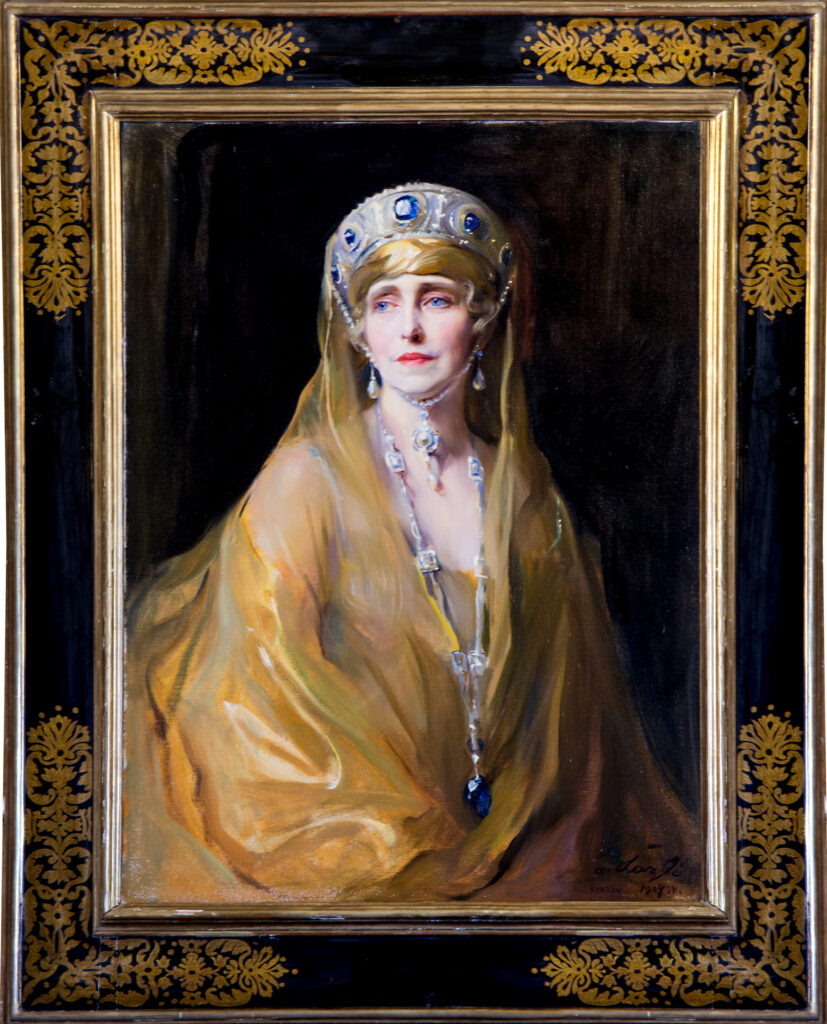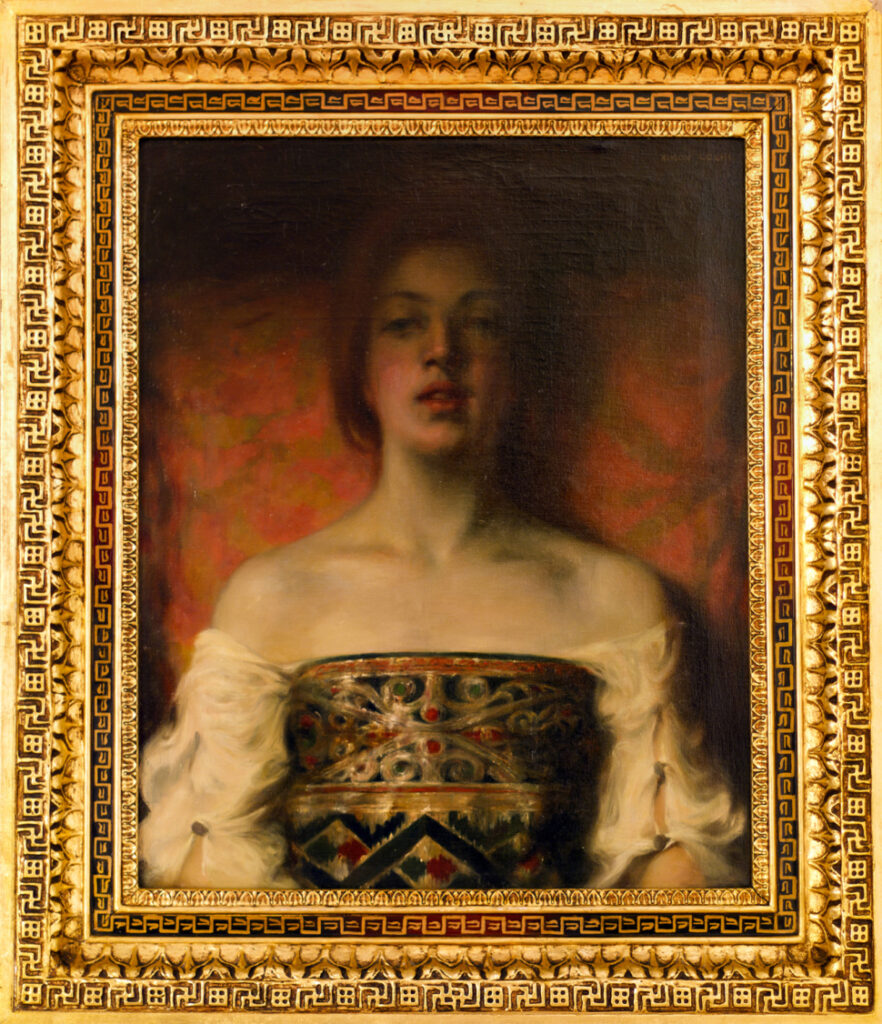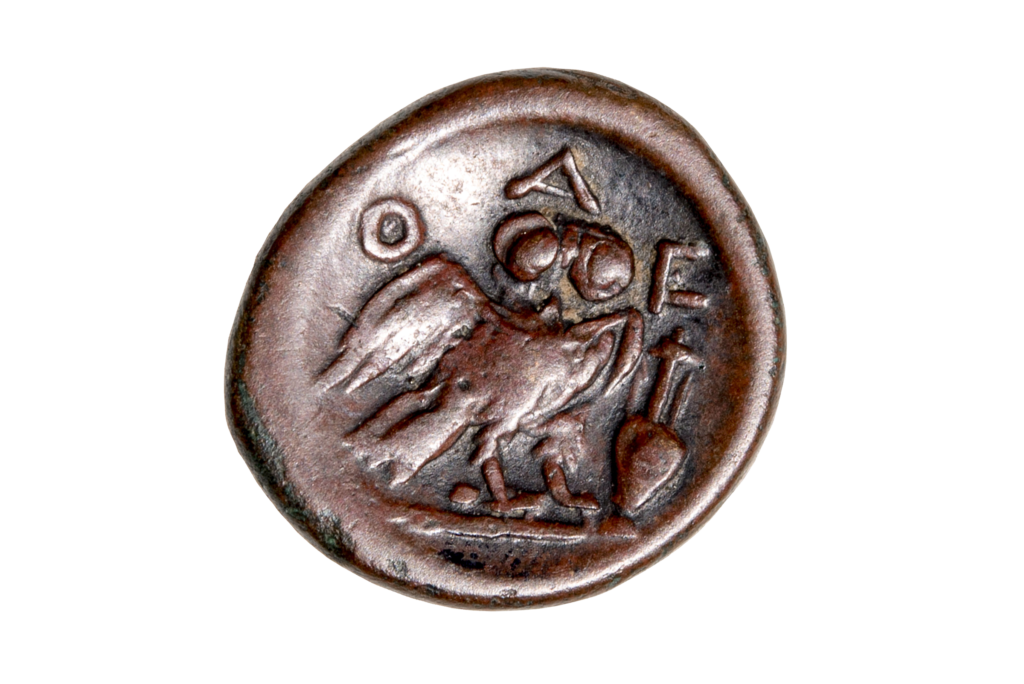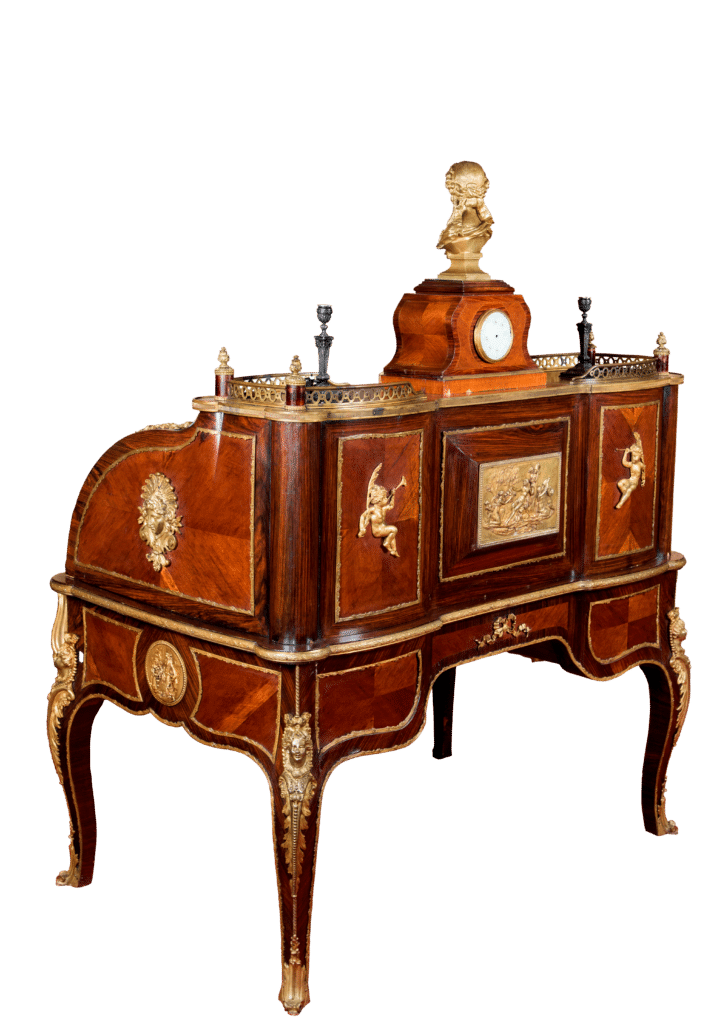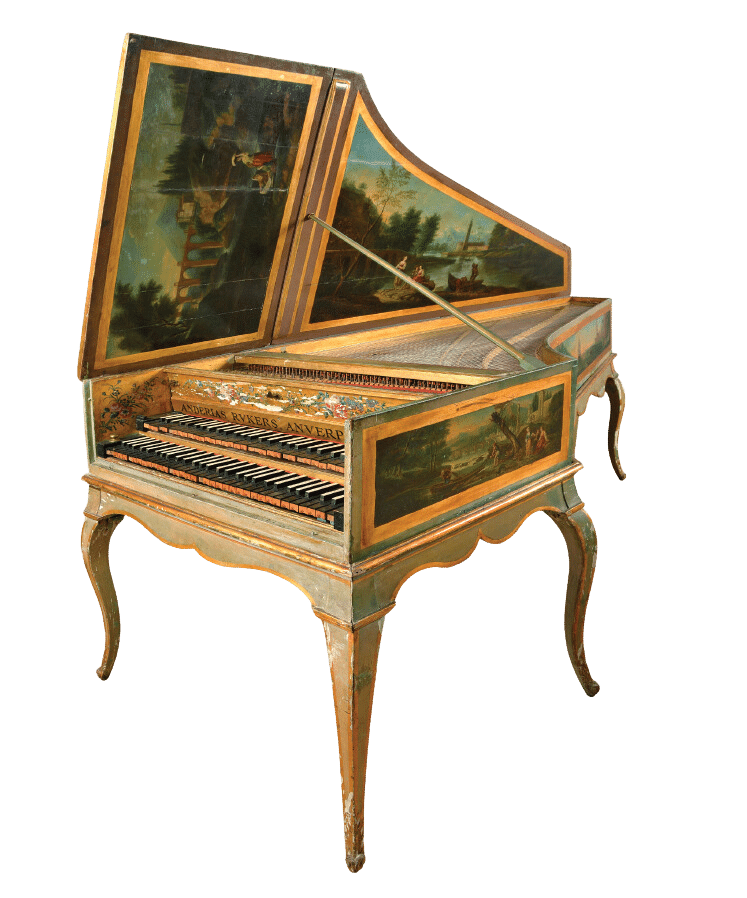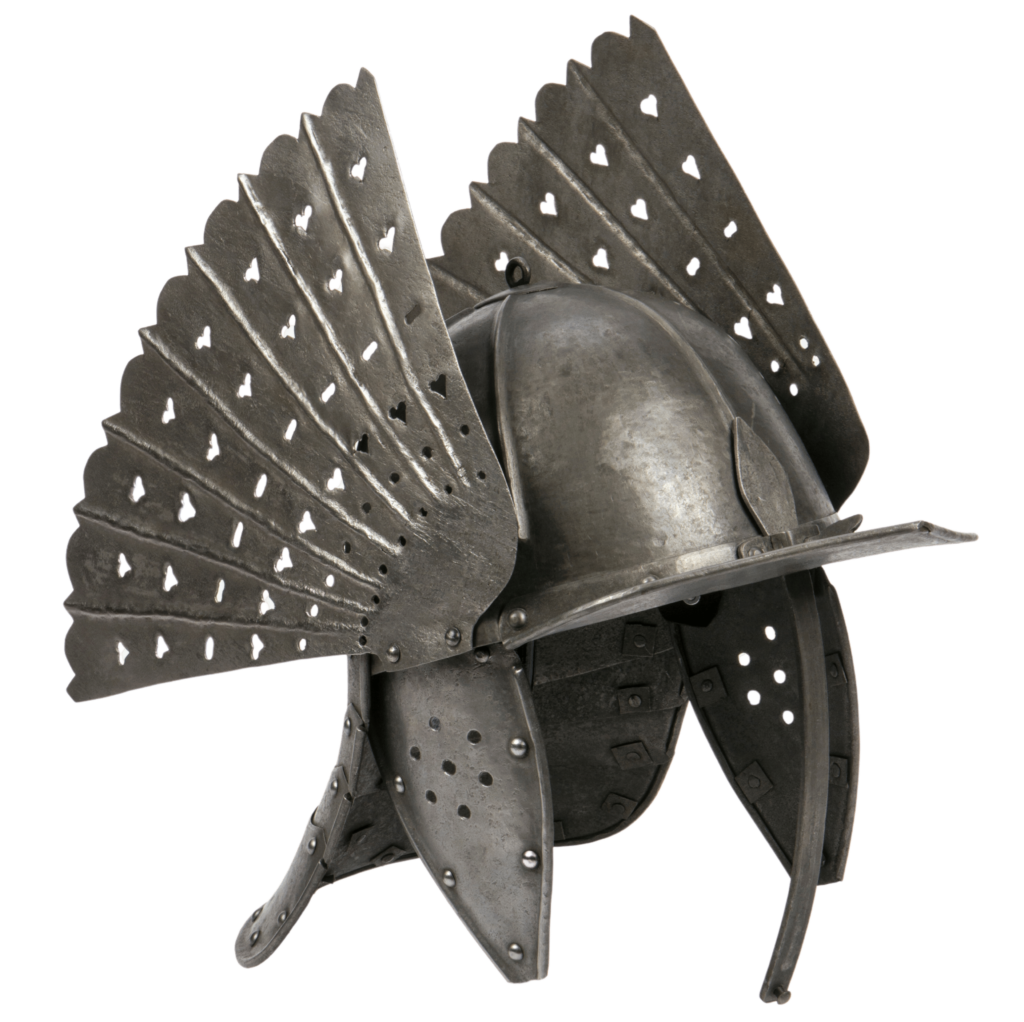Queen Elisabeth of Romania's passion for music being well known, this musical instrument could not be missing from the heritage of Peleş Castle, along with which we also mention the existence of a Pascal Taskin harpsichord, a Rieger organ and a Welte orchestrion, instruments with memorial value but also representative of the history of music.
The piano is one of the most popular musical instruments and was invented around 1700 by Bartolomeo Cristofori (1655 – 1732), a Florentine harpsichord maker who worked for the Medici family.
Originally called the hammer harpsichord, it represented a major improvement on the harpsichord because each note could be varied.
Cristofori's instrument would have remained unknown if an Italian writer, Scipione Maffei, had not written an enthusiastic article about it (1711), including a diagram of the mechanism. Starting from this article, entire generations of musical instrument makers, both in Europe and America, moved on to large-scale manufacturing, introducing innovations and improving the sound produced.
The name is an abbreviation of the Italian pianoforte, which derives from the instrument's original name clavicèmbalo col piano e forte (harpsichord with soft and loud tones).
Piano manufacturing experienced considerable development towards the end of the 18th century, in Vienna, under the guidance of Johann Andreas Stein, who had also worked in Germany, in Augsburg.
At first, only the nobility could afford a piano, as it was considered the prerogative of ladies, but after 1850 it became fashionable among members of the middle class, and later it represented the first instrument for children to learn music.
The shape and size of pianos vary over time, and the most well-known is the one with horizontal strings.
The upright piano appeared in the early 19th century and is known as the Giraffe Piano, due to the shape of the strings and its vertical construction, resembling a lyre or pyramid. Originally designed to occupy less space in the room, it presented an important innovation by being equipped with six pedals that reproduced effects similar to drums and bells.
The giraffe piano from the Peleş Castle heritage is located in the Concert Hall, as we can find it in the period photographs in the museum's archive, and it is functional.
The piece was executed at the special order of King Carol I, after 1900, in the workshops of Julius Blüthner in Leipzig and has imposing dimensions (L: 153 cm, W; 86 cm, H: 300cm), as well as aesthetic values.
Made of wood, with the strings fixed to a bronze plate in the shape of a lyre, the entire ensemble is gilded and is placed in the niche on the concert hall's stage, which acts as a resonance box. The factory logo is made of brass and is found affixed to the front, above the keyboard.
The piano is inscribed on the bronze plaque on the front with the name of the manufacturer's workshop: Julius Blüthner, Leipzig; Königl.Sächs.Hof-Pianoforte-Fabrik (Julius Blüthner, Leipzig; Piano Factory of the Royal Saxon Court), and 10 European royal houses are mentioned, with their corresponding coats of arms. Alongside the Royal Houses of Prussia, England and Denmark, there is also Sr.Maj.Königs von Rümanien (His Majesty the King of Romania).
The list continues with the record of this type of musical instrument, manufactured in Leipzig, from 1865 until 1900, when it won the gold medal at the Universal Exhibition in Paris. 19 first prizes at international fairs are mentioned, including those organized in Paris, Vienna, Amsterdam, Philadelphia, Melbourne, Sydney, and even Guatemala (1897).

